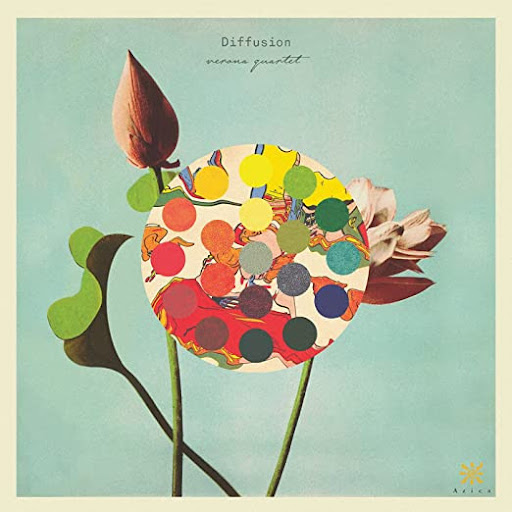by Cait Winston

In a statement on their website, violinists Jonathan Ong (Singapore) and Dorothy Ro, (Canada), violist Abigail Rojansky (U.S.A.), and cellist Jonathan Dormand (U.K.) establish the idea of “cultural migration” as central to their identity as a quartet. They describe Diffusion as embracing “the spirit of intercultural exploration that permeates many of the great works of the string quartet canon.”
Diffusion begins with Leoš Janáček’s 1928 String Quartet No. 2, “Intimate Letters,” a wild, turbulent piece that depicts the intensity of obsessive love through striking folk-like melodies and layered motifs. Throughout the first movement, the musicians vivify the music by emphasizing contrasts in texture and emotion, moving from broad, lyrical passages to fragmented melodies where a light touch of bow to string makes a jarring, raspy sound. The second movement finds some groundedness in its folky melodies, before moving into a dance filled with dissonant leaps and lush harmonics. The piece ends with a descent into madness, depicted vividly by the ensemble.
The Janáček is followed by Karol Szymanowski’s 1927 String Quartet No. 2, Op. 56. Szymanowski’s writing draws from Polish folk music while also exploring dissonant tones and complex meter that unexpectedly recontextualize the more traditional elements. The players move with ease from dense to lighter, more intimate textures created by the layering of delicate melodies. The third and final movement is intensely animated. The players engage in fierce counterpoint with one another, climaxing in dramatic moments that are rich in tone and punctuated with sharp articulations, before retreating back into a tentative piano.
Diffusion ends with Maurice Ravel’s String Quartet in F. In the first and third movements, the Verona’s technical precision, expressive freedom, and brilliant, dramatic phrasing bring Ravel’s gorgeous melodies to life. The lively pizzicato rhythms of the second movement are idiomatic of Gamelan music that originated in Indonesia and inspired many Impressionist composers. That acts as an intriguing preface to the slow third movement, “Très lent.” The beginning of the final movement is metrically unsettled, creating an excited, anxious energy that the players use to color the rest of the piece before restating its initial theme for a final time, ending in a triumphant major chord.
Diffusion, released on Azica Records, can be found on Spotify, iTunes, or Amazon Music.
Published on ClevelandClassical.com September 22, 2021.
Click here for a printable copy of this article


